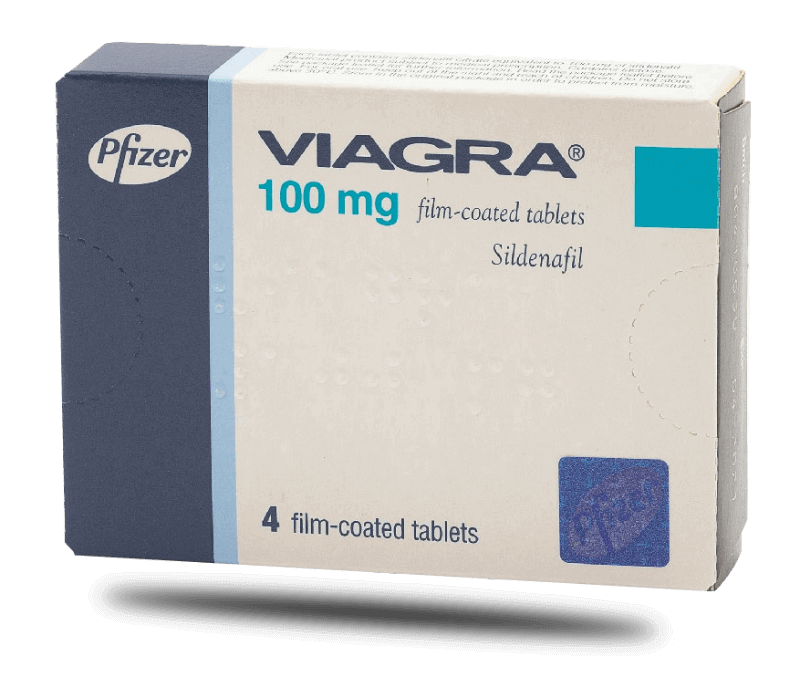Is Erectile Dysfunction Uncommon?

In the past 20 years, there have been a large number of epidemiological studies of men presenting erectile dysfunction.
There is emerging evidence of an association between erectile dysfunction and a variety of lifestyle factors, including obesity, smoking, and exercise, that may provide a means of intervening in the prevention and even therapy of erectile dysfunction.
An estimated 150 million men worldwide have some degree of erectile dysfunction, and more than twice that many are expected to be affected by 2025.
Click HERE to View Tadalafil Prices > >
Erectile dysfunction, an important window of cardiovascular risk mitigation
Erectile dysfunction and hypertension are two conditions that can be found frequently coexisting together, being predictors for cardiovascular diseases.
Erectile dysfunction is a disease characterized by a vascular impairment, and a few years ago, in 2011, researchers concluded that it is a disease marker predicting future severe cardiovascular events.
In 2013, the European Association of Urology. Published in Elsevier, a systematic review concluding that the erectile dysfunction and the cardiovascular disease are different manifestations of the same systemic disorder.
The review highlights the fact that the pathophysiologic mechanisms involved in both diseases are the following:
- The artery sizes. This hypothesis is based on the fact that the penile arteries are smaller (1-2 mm) compared with that of coronary arteries (3-4 mm) and the level of the endothelial dysfunction is affecting more the blood flow in the erectile tissues, compared with that in coronary arteries. However, the endothelial dysfunction and flow-limiting stenosis are both phenomena that are linked to both ED and coronary artery disease.
- Inflammation is a process that affects endothelial function and might lead to a prothrombotic status. Inflammatory markers and mediators (ie, C-reactive protein, intercellular adhesion molecule 1, interleukin [IL]-6, IL-10, IL-1b, and tumour necrosis factor a) and endothelial/prothrombotic factors (i.e., von Willebrand factor, tissue plasminogen activator, plasminogen activator inhibitor 1, and fibrinogen) have been shown to be expressed at higher levels in patients with erectile dysfunction.
- Testosterone levels. Low androgen levels have been shown to be associated with erectile dysfunction, metabolic syndrome, diabetes, and cardiovascular disease.
- Testosterone, acts both centrally and peripherally, playing a major role in the control of sexual function. Increased testosterone levels have been reported to be inversely related to the risk of major adverse cardiac events and to coronary artery disease mortality.
The importance of these findings in clinical practice is the fact that, because erectile dysfunction may precede cardiovascular diseases, it can be used as an early marker to identify men at higher risk of developing severe cardiac events. Also, patients with erectile dysfunction should undergo detailed cardiologic assessment and receive intensive treatment of risk factors.
Recent evidence suggests that lifestyle changes, administration of phosphodiesterase type-5 inhibitors, and testosterone supplementation might improve sexual function and reduce the risk of experiencing CVD during follow-up.
Erectile Dysfunction as an Independent Predictor of Future Cardiovascular Events
Uddin et al, on behalf of the American Heart Association were the authors that published the results from a multicentric, multi-ethnic, prospective cohort study that had the objective of examining the correlation between self-reported erectile dysfunction and the preceding cardiovascular events (such as myocardial infarction, cardiac arrest, death) plus stroke and stroke death.
Subjects enrolled were men with complaints of erectile dysfunction and were followed during a period of approximately 4 years. The mean age of the 1914 participants was 69±9.2 years and 42.3% were white, 24.2% were African American, 10.5% were Chinese American, and 22.9% were Hispanic. Erectile dysfunction symptoms were reported by 877 (45.8%) participants. A large percentage of the participants with erectile dysfunction had an associated diabetes mellitus. They were also more likely to use β-blocker, antihypertensive, lipid-lowering, and antidepressant medications. At the end of the study, there were a total of 40 patients with Coronary Heart Disease reported and 75 cases of cardiovascular disease hard events. A significantly greater proportion of participants with erectile dysfunction experienced hard events than those without erectile dysfunction (Coronary Heart Disease hard events: 3.4% versus 1.4%, P<0.001).
In 2017, the UK QRISK score was the first to incorporate erectile dysfunction as an independent risk factor for cardiovascular disease.

The role of tadalafil in improving the erectile and ejaculatory function and sexual performance: a randomized, double-blind, placebo-controlled study
Tadalafil is a drug belonging to the class of phosphodiesterase type 5 (PDE-5), considered the first line treatment for Erectile Dysfunction.
The guidelines of the International Society for Sexual Medicine (ISSM) Standards Committee for Sexual Medicine suggest that treatment with PDE-5-inhibitors can be effective in most Erectile Dysfunction etiologies except after severe damage of the parasympathetic cavernous nerves.
The relatively long half-life of tadalafil (17.5 hours) allowed the confirmation of highest potency for PDE-5 inhibition, successful clinical development and subsequent regulatory approval of tadalafil.
Tadalafil is approved for treating signs and symptoms of benign prostatic hyperplasia (BPH).
Tadalafil has commercialised in four doses: 2.5 mg, 5 mg, 10 mg and 20 mg.
In this international study, the investigators aimed to demonstrate the effects of tadalafil or tamsulosin on sexual function, including ejaculation and orgasm, satisfaction, and erectile function, in sexually active men with ED and lower urinary tract symptoms suggestive of BPH (LUTS/BPH).
Oelke and colleagues already demonstrated in a previous a 12-week, randomized, controlled study, assessing the International Prostate Symptom Score (IPSS) that tadalafil or tamsulosin similarly improved lower urinary tract symptoms suggestive of benign prostatic hyperplasia.
For the present study, 511 men were selected, with most patients reporting moderate-to-severe ED of at least 1-year duration.
The overall study period was 16 weeks. The lead-in period consisted in 4-week single-blind, placebo lead-in, and was followed by randomization (1:1:1 ratio) to once daily tadalafil 5 mg, tamsulosin 0.4 mg, or placebo (a dummy treatment) for 12 weeks.
Taking the significant improvement in the LUTS/BPH symptoms reported in the previous trial, the investigators wanted to further evaluate the effects of tadalafil or tamsulosin once daily compared with placebo on sexual function, including ejaculation/orgasm, sexual satisfaction, and erection measured by the International Index of Erectile Function (IIEF) questionnaire.
The IIEF questionnaire is a standardized and validated 15-item questionnaire that evaluates sexual function and satisfaction and was administered at specific time points: at baseline (start of randomised treatment) and 4, 8, and 12 weeks.
Ejaculatory disorders are a proven side effect of the alpha-blockers tamsulosin and silodosin. In a meta-analysis performed by the American Urological Association, tamsulosin was associated with a higher incidence of ejaculatory disorders (10%) when compared with previously approved alpha-blockers. 10
Also, in a 3-month placebo-controlled study, the incidence of ejaculatory disorders associated with increased doses of tamsulosin was reported as follows: 6% with the 0.4-mg dose to 18% with the 0.8-mg dose, while no patient on placebo reported ejaculatory disorder.
The results of this study show that in men with LUTS/BPH who were sexually active and had ED, tadalafil, but not tamsulosin, preserved and improved sexual functioning. Men receiving tadalafil 5 mg once daily experienced significant improvements in intercourse, ejaculation, and orgasm, as well as overall satisfaction and improvement of erectile function, based on assessments using the IIEF. In contrast, men receiving tamsulosin experienced no significant improvement in intercourse satisfaction or erectile function and worsening scores relative to placebo in ejaculation and orgasm and in overall satisfaction.
In tadalafil phase III studies, the effects of tadalafil were compared with those of placebo, and the main measure of effectiveness was the ability to get and maintain an erection. This was recorded in two questionnaires completed at home. The main measure of effectiveness was the improvement in symptoms after 12 weeks.
Data from long-term studies of up to 2 years suggest tadalafil once daily provided efficacy for the duration of therapy and had a relatively mild side-effect profile, with no visual side-effects noted.
The most frequently reported treatment-emergent adverse events included a headache (15.8%), dyspepsia (11.8%), nasopharyngitis (11.4%), and back pain (8.2%).
Most adverse events were mild or moderate. The percentage of events reported as mild or moderate was 88% and the percentage of events reported as severe was 12%.
In the patient information leaflet, related to adverse reactions observed when administering tadalafil medicinal products, some events appear more frequent and some relatively rare.
The most common side effects (seen in 1 to 10 in every 100 patients) with tadalafil are a headache, back pain, muscle aches, pain in arms and legs, facial flushing, nasal congestion, and indigestion, which are more common at higher doses.
Uncommon side effects (seen in 1 to 10 in every 1,000 patients) include allergic reactions, such as rashes, chest pain, dizziness, stomach ache, feeling sick, being sick (vomiting), reflux, blurred vision, eye pain, difficulty in breathing, presence of blood in urine, prolonged erection, pounding heartbeat sensation, a fast heart rate, high blood pressure, low blood pressure, nose bleeds, ringing in the ears, swelling of the hands, feet or ankles and feeling tired.
Rare side effects (seen in 1 to 10 in every 10,000 patients) are sudden decrease or loss of vision or hearing, a prolonged and possibly painful erection after taking tadalafil, fainting, seizures and passing memory loss, swelling of the eyelids, red eyes, sudden decrease or loss of hearing, hives (itchy red welts on the surface of the skin), penile bleeding, presence of blood in semen and increased sweating.
Contraindications:
Tadalafil can be indicated for you but cannot be the right treatment for everyone.
It is indicated to tell your healthcare provider about all your medical problems, particularly if you have or ever had:
- heart problems such as chest pain (angina), heart failure, irregular heartbeats, or have had a heart attack;
- high or low blood pressure or have high blood pressure that is not controlled;
- stroke;
- liver or kidney problems or require dialysis;
- retinitis pigmentosa, a rare genetic (runs in families) eye disease;
- severe vision loss, including a condition, called NAION;
- stomach ulcers or a bleeding problem;
- a deformed penis shape or Peyronie’s disease;
- an erection that lasted more than 4 hours;
- blood cell problems such as sickle cell anaemia, multiple myeloma, or leukaemia.
Tadalafil is contraindicated to be administrated with any form of organic nitrates. Organic nitrates are drugs that widen arteries by increasing their supply of nitric oxide. That is how they open the partially blocked coronary arteries in patients with angina. But because nitrates and tadalafil both act on nitric oxide, the drugs should not be co-administrated. All experts agree that men who are taking nitrates cannot use pills for erectile dysfunction; this includes all preparations of nitro-glycerine (short-acting, under-the-tongue tablets or sprays), long-acting nitrates (isosorbide dinitrate or Isordil, Sorbitrate, and others, and isosorbide mononitrate, Imdur, ISMO, and others), nitro-glycerine patches and pastes, and amyl nitrite or amyl nitrate (so-called poppers, which some men use for sexual stimulation). Using tadalafil with these type of drugs may cause an excessive decrease in blood pressure and finally, cardiovascular collapse.
According to the Tadalafil Package leaflet, the co-administration of doxazosin (anti-hypertensive, alpha-blocker) and tadalafil (5 mg daily dose and 20 mg as a single dose) increases the blood pressure-lowering effect of tadalafil in a significant manner. This effect lasts at least twelve hours and may be symptomatic, including syncope. Therefore, this combination is not recommended.
Is Tadalafil safe for men with heart disease?
In a Swedish nation-wide cohort study all men evaluated the association between treatment for erectile dysfunction and death or cardiovascular outcomes after a first myocardial infarction. The study included 43145 men with a mean age of 64(±10) years without prior myocardial infarction, or cardiac revascularization, hospitalised for myocardial infarction during 2007 through 2013. The results showed that treatment with phosphodiesterase type 5 inhibitors after a first myocardial infarction was associated with a reduced mortality and heart failure hospitalisation.
For more information on the safety of Tadalafil, check out our article on the topic here.
How should I take tadalafil?
Tadalafil comes as a tablet to be taken orally. It could be taken with or without food.
In erectile dysfunction, there are 2 different ways to take tadalafil either daily or on an as-needed basis. Tadalafil for daily use comes as tablets of 2.5 mg and 5 mg, while tadalafil for use as needed comes as tablets of 5 mg, 10 mg, and 20 mg.
The pill should not be split, crushed, or chewed. It should be swallowed whole with a glass of water.
Tadalafil for use as needed should be taken 30 minutes before sexual activity and not more often than once every 24 hours. In this case, the first dose recommended is 10 mg. The dose should be adjusted depending on how you respond to the treatment. The dose could be increased to 20 mg or reduced to 5 mg depending on the efficacy and tolerability. The maximum dose of tadalafil is 20 mg as a single dose.
Tadalafil for daily use does not necessarily need to be taken before sex, but it needs to be taken at the same time every day. This provides erectile potency 24 hours per day and can be used by men who anticipate engaging in intercourse two or more times per week. The indicated dose is 2.5 mg, but it can be increased to 5 mg based upon the efficacy and tolerability.
Worried about buying online? This article should put you at ease. We always have qualified pharmacists on hand to help also!
In summary…
- An estimated 150 million men worldwide have some degree of erectile dysfunction;
- The first signs of erectile dysfunction can mitigate the risk of important cardiovascular events if addressed immediately;
- The European Association of Urology concluded that the erectile dysfunction and the cardiovascular disease are different manifestations of the same systemic disorder;
- The UK was the first to have the initiative of incorporating erectile dysfunction as an independent risk factor for cardiovascular disease;
- Tadalafil comes as a tablet to take by mouth and it can be taken with or without food;
- In erectile dysfunction, there are 2 different ways to take tadalafil: either daily or on an as-needed basis;
- Tadalafil for daily use comes as tablets of 2.5 mg and 5 mg, while tadalafil for use as needed comes as tablets of 5 mg, 10 mg, and 20 mg;
- Tadalafil has a favourable cardiovascular safety profile;
- Tadalafil appears to have a relatively mild side-effect profile;
- Tadalafil demonstrated improvement in the erectile and ejaculatory function and sexual performance;
- Tadalafil is contraindicated in patients administering medications that contain nitrates, which are usually prescribed for the treatment of angina pectoris. One of the most frequently prescribed nitrates is nitroglycerin, which can also be found in creams, sprays, candy, and blisters. Other drugs containing nitrates include isosorbide dinitrate or isosorbide mononitrate.
If you have a sudden decrease or loss of vision or hearing, stop taking any tadalafil product, including Cialis and call a healthcare provider right away.
The hypotension symptoms are as follows: lightheadedness or dizziness, feeling sick, blurred vision, generally feeling weak, feeling confusion, fainting.
Click HERE to View Tadalafil Prices > >
References:
- Ayta IA, McKinlay JB, Krane RJ. The likely worldwide increase in erectile dysfunction between 1995 and 2025 and some possible policy consequences. BJU Int. 1999;84:50-56.
- Shin D, Pregenzer G, Gardin JM. Erectile dysfunction: a disease marker for cardiovascular disease. Cardiol Rev. 2011; 19: 5–11;
- Gandaglia G, Briganti A, Jackson G, Kloner RA, Montorsi F, Montorsi P, Vlachopoulos C. A systematic review of the association between erectile dysfunction and cardiovascular disease. Eur Urol. 2014 May;65(5):968-78. doi: 10.1016/j.eururo. 2013.08.023. Epub 2013 Aug 23. Review. PubMed PMID: 24011423;
- Gandaglia G, Montorsi F, Montorsi P. [Management of erectile dysfunction in patients with preexisting cardiovascular disease]. G Ital Cardiol (Rome). 2016 May;17(5):356-62. doi: 10.1714/2252.24262. Review. Italian. PubMed PMID:27310909;
- Uddin SMI, Mirbolouk M, Dardari Z, Feldman DI, Cainzos-Achirica M, DeFilippis AP, Greenland P, Blankstein R, Billups KL, Miner M, Nasir K, Blaha MJ. Erectile Dysfunction as an Independent Predictor of Future Cardiovascular Events: The Multi-Ethnic Study of Atherosclerosis. Circulation. 2018 Jun 11. pii: CIRCULATIONAHA.118.033990. doi: 10.1161/CIRCULATIONAHA.118.033990. [Epub ahead of print] PubMed PMID: 29891569;
- Julia Hippisley-Cox, Coupland C, Brindle P. Development and validation of QRISK3 risk prediction algorithms to estimate future risk of cardiovascular disease: prospective cohort study. BMJ. 2017;357: j2099;
- Porst H, Burnett A, Brock G, et al. SOP conservative (medical and mechanical) treatment of erectile dysfunction. J Sex Med 2013;10: 130–71;
- Giuliano F, Oelke M, Jungwirth A, Hatzimouratidis K, Watts S, Cox D, Viktrup L. Tadalafil once daily improves ejaculatory function, erectile function, and sexual satisfaction in men with lower urinary tract symptoms suggestive of benign prostatic hyperplasia and erectile dysfunction: results from a randomized, placebo- and tamsulosin-controlled, 12-week double-blind study. J Sex Med. 2013 Mar;10(3):857-65. doi: 10.1111/jsm.12039. Epub 2013 Jan 24. PubMed PMID:23346990;
- Oelke M, Giuliano F, Mirone V, Xu L, Cox D, Viktrup L. Monotherapy with tadalafil or tamsulosin similarly improved lower urinary tract symptoms suggestive of benign prostatic hyperplasia in an international, randomised, parallel, placebo controlled clinical trial. Eur Urol 2012; 61:917–25;
- American Urology Association BPH Guidelines Panel. American Urological Association (AUA) Guideline: Guideline on the Management of Benign Prostatic Hyperplasia. 2006. Available at: http://www.auanet.org/content/clinical-practiceguidelines/clinical-guidelines/archived-guidelines/chapt_3_ appendix.pdf (accessed September 12, 2012);
- Lepor H. Phase III multicenter placebo-controlled study of tamsulosin in benign prostatic hyperplasia. Tamsulosin Investigator Group. Urology 1998;51:892–900.
- Cialis/Tadalafil- Package leaflet: Information for the user;
- http://heart.bmj.com/content/early/2017/03/08/heartjnl-2016-310746.


